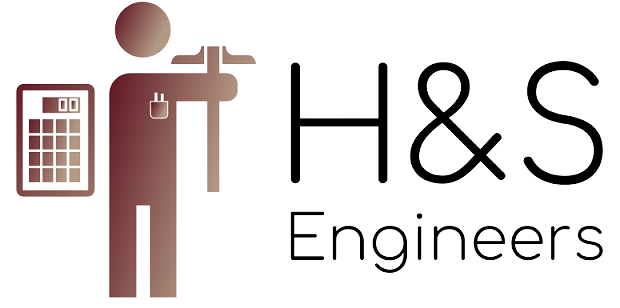Project Detail

HEC-RAS Analysis
- Location: Geneva, Switzerland
- River Reach: L’Aire
- Period of Analysis: January–March 2014
- Enterprise: SECOE, Geneva
Introduction
Flooding occurs when flowing water exceeds its bank-full capacity, inundating the surrounding areas. This phenomenon can result from intense rainfall or significant snowmelt. In addition to flooding, increased flow velocity may erode fragile riverbanks, causing severe damage and escalating the impact of the flood.
To mitigate these risks, proper protection measures must be implemented along vulnerable riverbanks before extreme flows occur.
Existing Stabilization Measures
Along the River Aire, several stabilization measures have been introduced:
- Biological or organic protection: Used to prevent further bank degradation.
- Gabion structures: Installed to reinforce certain sections of the riverbanks.
However, there are still areas where additional stabilization is required. For instance, as shown in Figures 5 and 6, riverbank curvatures are particularly susceptible to erosion and need protective measures.
Proposed Solutions
To mitigate potential future damages:
- Construction of levees to contain floodwaters.
- Temporary or provisional flood storage basins to manage excess water during high flows.
- Elevating villages above the flood line to safeguard against inundation.
HEC-RAS Modeling
The HEC-RAS model was employed to analyze the impact of discharge events with recurrence intervals of:
- 10 years (Q10)
- 30 years (Q30)
- 100 years (Q100)
- 300 years (Q300)
The discharges associated with these recurrence periods were assessed, and the findings of the analysis, along with proposed measures, are detailed below.
The River Aire
The River Aire originates near the villages of Présilly, Beaumont, and Feigères in France. Its tributaries converge at St. Julien en Genevois before the river flows toward Geneva, passing through areas such as Confignon and Lancy. Eventually, the River Aire merges with the River Arve beneath the Saint-Georges Bridge in Geneva.
Figures 1, 2, and 3 illustrate the river’s origins and its course, highlighting the critical areas analyzed in this study.
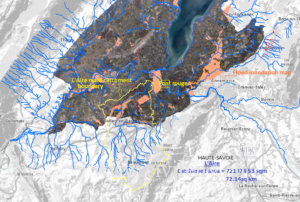
Figure 1 Catchment and watercourse of L’Aire
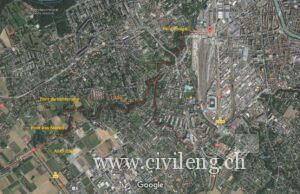
Figure 2 The river reach (5.36km)
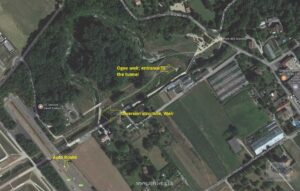
Figure 3 Newly constructed diversion structure and the diversion tunnel
Figures 4, 5, and 6 illustrate the representation of the riverbanks along the specified reach.

Figure 4 Vegetation covers around 2.8 km of the Pont-Rouge, Photo taken on 4.03.2014
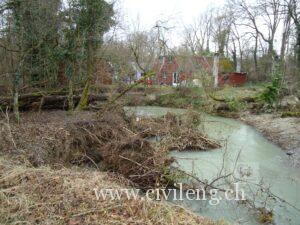
Figure 5 Eroded bank at around 4km upstream of the D/S end (photo taken on 4.03.2014)
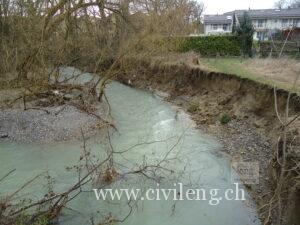
Figure 6 Unstable bank at around 4km of the D/S end (Photo taken on 4.03.2014)
Data
To execute the HEC-RAS model, both cross-sectional and hydrological data were provided. However, the origin of the data was not specified, leaving it unclear whether it was obtained through surveying, ArcGIS extractions, or other software products. Certain cross-sections were modified, and necessary corrections were applied to ensure the model ran successfully.
- Overall Reach Length: 5363.91 meters
- Average Distance Between Cross-Sections: 23.5 meters
There are five bridges along the analyzed reach. The central waterway consisted of cobbles, while approximately 70% of the right and left banks were covered with vegetation, as depicted in Figures 7 and 8.
To account for these characteristics, the following roughness coefficients were assumed:
- Riverbed: 0.05
- Banks: 0.1
Additionally, lateral concrete structures and tributaries were present along the stream. The flow fluctuated significantly, with supplementary lateral inflows observed approximately 1690 meters downstream.
Flow Data
Flow measurements for the given recurrence time periods are summarized in Table 1.
Table 1: Flow data for four recurrence periods

Figures 7 and 8 illustrate the representation of the riverbed as well as the right and left banks of the river.

Figure 7 Cobbles along the main riverbed
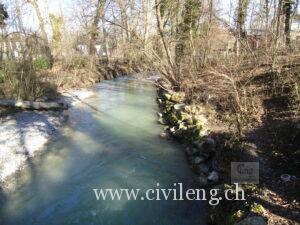 Figure 8 Bank vegetation cover of the river (represent 60-70%)
Figure 8 Bank vegetation cover of the river (represent 60-70%)
The step-by-step process of running the model using the data provided above is demonstrated in this video link.[ video link]
The Results
Figures 9, 10, and 11 illustrate the results of the analysis in visual form.

Figure 9 Longitudinal profile of the river for each return period
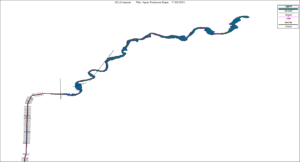
Figure 10 Plan view
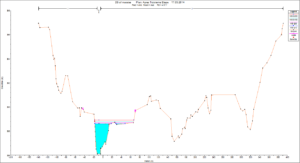
Figure 11 Cross-section at station 4107.7m
Result Analysis
The provided flow data for a 100-year return period at Pont des Marais and Pont Rouge are 39 Cumecs and 48 Cumecs, respectively. The HEC-RAS simulation indicated velocities along the river ranging from 0.63 m/s to 3.95 m/s.
High velocities are particularly concerning as they can erode riverbanks and destabilize nearby infrastructure. For instance, a velocity of 3 m/s is sufficient to erode natural ground and transport large debris downstream. Under normal flow conditions, such as a discharge of 0.745 Cumecs at Pont du Centenaire, the velocity is approximately 0.25 m/s, well below the scouring threshold. However, a discharge of 39 Cumecs can significantly increase flow velocity, potentially causing erosion and bank instability.
For higher discharges, such as those associated with Q100 and Q300 events, the risks of bank erosion, overflow, and inundation rise considerably. Thus, implementing precautionary measures is critical to mitigate potential damage.
Mitigation Measures
- Managing Discharge at Pont Rouge:
The maximum discharge capacity at the Pont Rouge (tunnel entrance) is 60 Cumecs. To prevent exceeding this threshold, lowering upstream discharge is essential. Recent construction of a diversion structure has effectively reduced the amount of discharge at Pont Rouge, as confirmed by the HEC-RAS analysis. - Preventing Bank Erosion:
Once erosion begins, floodwaters can easily breach the banks, inundating nearby villages and surrounding areas. Protective measures such as gabion walls or concrete retaining walls are recommended to stabilize the banks during high-flow periods. - Flood Storage and Detention:
To reduce the risk of inundation, temporary detention basins upstream can store excess water during flood events. These basins act as buffers, minimizing potential hazards for downstream communities.
Additional Resources
- Video Demonstrations:
- Preparing HEC-RAS data using ArcGIS
- Flood mapping analysis using HEC-RAS
The video links provide a comprehensive guide to the data preparation and analysis process for this study.
Other useful video resources related to the HEC-RAS analysis can also be accessed through the provided link.
Key Highlights
- Location: Geneva, Switzerland
- Reach Length: 5.36 km
- Principal Catchment Area of L’Aire: 72 sq. km
This analysis emphasizes the importance of proactive planning and protective measures to safeguard communities and infrastructure from the risks posed by high-flow events.
[put_wpgm id=1]

